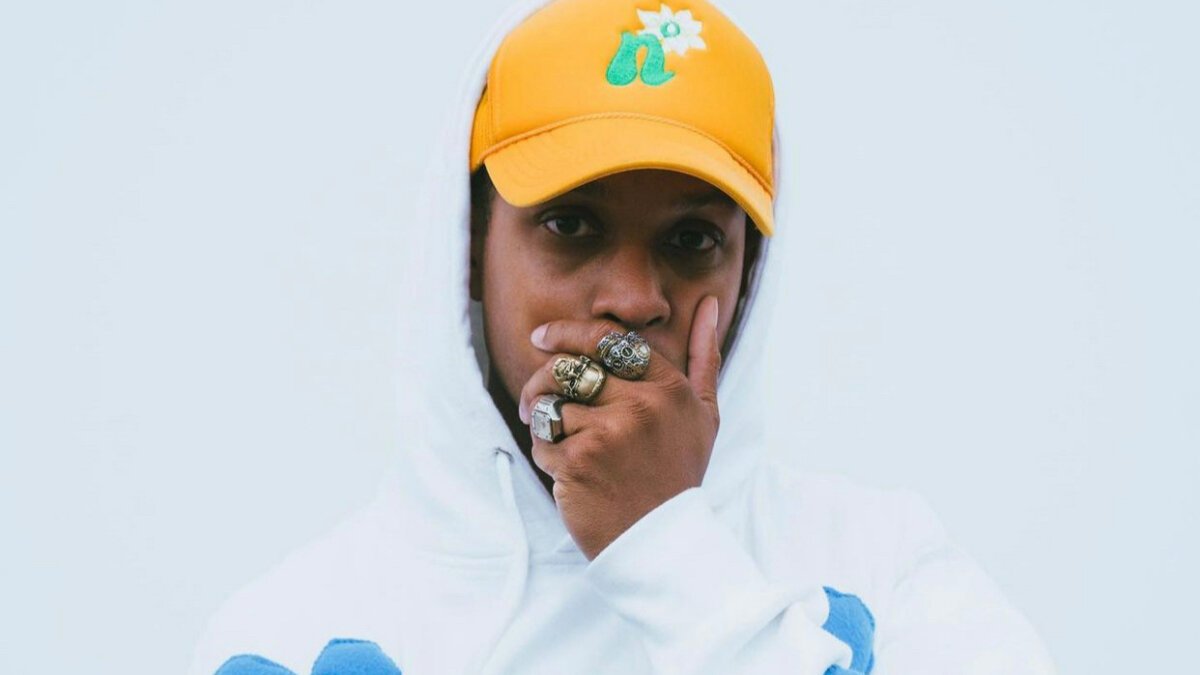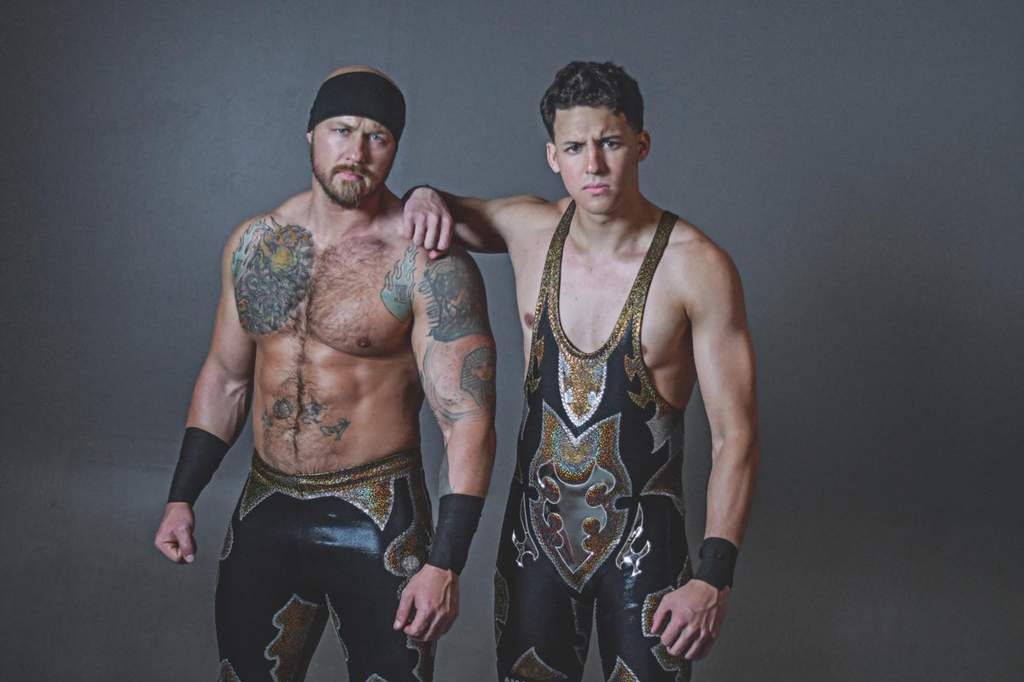NWA, Trevor Murdoch Bring Modern Old-School Wrestling to Chalmette This Weekend

Announcer Kyle Davis and Billy Corgan on the set of “NWA Powerrr,” by Hiban Huerta/NWA.
The Billy Corgan-owned promotion found its signature talent in the veteran Trevor Murdoch.
The NWA sells itself as “Wrestling as it’s meant to be.” Announcer Joe Galli’s tagline in part nods to the NWA’s history dating back to the late 1940s. It was an umbrella organization that gave a little structure to all the regional wrestling promotions, and most of the greatest names in wrestling history passed through the NWA. When Vince McMahon made the WWF a national promotion, his growth came at the expense of the NWA, so much so that until recently, it existed more as a name and a concept—hard-nosed, brawling action with an eye on tradition—than an actual promotion.
When The Smashing Pumpkins’ Billy Corgan bought the NWA in 2017, he gave it a throwback vibe down to shows taped in a television studio instead of arenas. It’s the way he saw wrestling in the 1970s growing up in Chicago, and it’s the way everybody saw wrestling on television before the WWF/WWE moved even its smaller shows to arenas.
The NWA is in New Orleans this weekend for two shows in Chalmette— the “Hard Times in New Orleans” pay-per-view on Saturday night, and “Revolution Rumble - an NWA Powerrr Trip” on Sunday. The latter will be a taping for its NWA Powerrr show on YouTube with a “Revolution Rumble” featuring members of the NWA roster and the local Wildkat Wrestling promotion battling it out.
On Saturday night, Trevor Murdoch will defend his NWA Championship against Matt Cardona and Tyrus, and Murdoch is the kind of wrestler you’d imagine as the NWA champ. He admits he’s old school, having spent seven years learning from former NWA star Harley Race, someone who brawled first and asked questions later.
“I don’t know how to wrestle any other way,” he says, but staying true those roots has become a bit of a mission as well. “I feel like we’re carrying the DNA of wrestling. It’s our obligation to carry on the tradition.”
These days, high flyers are more in vogue as smaller, lighter wrestlers execute athletic moves, frequently from the top rope. Murdoch doesn’t go up that high unless he has to. His body’s not shaped for flying, and Canadian Destroyers are not in his skill set. He’s more likely to punch someone in the mouth than flip them on their head. He respects those moves and the people who can do them, but they have their time and place.
“We’ve got to find the right spot for it to make sense,” Murdoch says. “I’ll be damned if I’m going to let you randomly do something to me if it doesn’t make sense.”
One thing Murdoch learned from Race was the importance of the story being told in a match. Fans oooh and ahhh at topé suicidas and top rope flips, but Murdoch found that they really connect to the match when it has a story to give those moves meaning. He points to a match with Thom Latimer, who’ll be on Saturday’s card, as one of his finest moments even though he took a shellacking.
It occurred to Murdoch that you never see a one-sided match unless it’s a squash match, so he wanted to do one, letting Latimer dominate before stealing a win at the last moment. “I didn’t swing one punch, one kick,” he recalls. “The minute my foot stepped on the mat in the ring, he proceeded to kick my ass for the next five minutes. The range of emotions from those people for those five minutes was amazing.” They started booing Latimer, then their hatred turned to sympathy for him because he couldn’t put Murdoch away despite the onslaught. Then they got back behind Murdoch, urging him to fight back, getting desperate for him mount some kind of offense. When he grabbed Latimer and won with a surprise roll-up, the crowd went nuts.
“I get chicken skin thinking about it because of the range of emotions those people went through with a simple story of he was kicking my ass.”
In the process, he made Latimer look like a killer, and before he joined the NWA, it was his role to build younger talent. He worked in the WWE from 2005 to 2008 in a tag team with Lance Cade, and even during that time he would come home to small-town Missouri to work matches with Harley Race’s students. After he left the WWE, he worked independent shows, but he was booked to sell tickets as one of the bigger names on the card and put the young talent over. It’s part of the wrestlers’ code of honor to put over new talent in the same way that older wrestlers put Murdoch over when he was coming up. Still, he felt like he was at a professional standstill. He could work, but his story didn’t matter.
When Billy Corgan approached Murdoch about signing with the NWA, Corgan had a challenge on his hands. Many critics told him that he had bought “three worthless letters.” He literally bought the promotion, not a library of NWA television since those libraries belonged to the individual regional promotions. And in 2017, it wasn’t an active, independent entity. Its belts were contested on cards with other promotions, but it had no stand-alone shows or programming.
It had what Corgan calls “an incredible legacy” with real significance. “The longer arc NWA story is an American narrative,” he says. “It grows in a particular time with a particular form of American capitalism. It fell during the age of cable with a different form of capitalism, and now it’s rising again with a new wave of digital television.” But it’s hard to sell tickets on resonance, significance, and karmic irony. Corgan had to figure out how get the legendary aura the name still conjured in front of modern audiences.
“This is not a museum we’re running,” he says. “We’re running a commercial institution. We have the Johnny Valentines of today, I have guys who are just as talented. Whether they go on to achieve that, we’ll see. But I have those guys and they’re looking at me to see if I can figure it out with them. How to make them money when the business has never been more crowded.”
He went online with NWA Powerrr in 2019 with a roster that included younger talents including Thunder Rosa from Lucha Underground and Ricky Starks, WWE veteran Damian Sandow, who showed up in NWA as Aron Stevens. The champion was the arrogantly handsome Nick Aldis, who had the statuesque Kamille—now the women’s champion—as his enforcer. For old school appeal, he had the masked wrestler The Question Mark who hailed from the fictional country of “Mongrovia,” and Murdoch.
Murdoch wasn’t sure how he fit when Corgan brought him in. He was used to seeing himself in a support role and when Corgan told him to be himself, he wasn’t sure what to do with that. It wasn’t until he wrestled Starks in his first match for NWA that it all came back to him.
“When I got done with the match, the reception I got from the people really convinced me that I can still do this and that I have a lot to give the business,” Murdoch says. “The people let me know that, What you’re doing, we want to watch.”
COVID forced Corgan to shut down tapings for a while, and during that time Starks and Thunder Rosa went to AEW, where both have held titles. He’s philosophical about stars leaving the company. He sees their successes as proof that his programming works, and that time in the NWA could lead to bigger paydays and opportunities for the talent. “When someone moves on with dignity, it’s a plus for the NWA,” he says.
The time off gave Corgan time to rethink the project, which he originally modeled on Instagram in the fun, slightly random way it moved from segment to segment. “It was an entertainment product,” he says. Its popularity was growing with fans, but Corgan realized before COVID forced a hiatus that he also needed to show the locker room that his NWA wrestling was going to get them paid and potentially open doors to future opportunities. He needed a product that gave talent a reason to want to work with the NWA, which meant he had to reset priorities and lean more on the wrestling staples of promos and in-ring action.
“That distinction now is the difference maker.”
Murdoch likes the healthy competition he sees in the locker room, which suits the roughneck sensibility he learned from Race. “A lot of us guys will go out and give each other shit,” he says. “Okay, follow this, asshole.” He still works with a lot of young talent, some of whom get a little rambunctious and want to show their stuff, regardless of the match’s story. In those cases, he occasionally has to tighten them up. He gets the desire of younger wrestlers to show what they can do, particularly when circus moves get attention on social media, but “I’m not going to let you do something to me if it doesn’t make sense,” he says.
“I have no problem going in there and stretching somebody. Not to hurt them, but to get my point across.”
A story focusing on Billy Corgan’s efforts to reinvent NWA is up now at Nola.com.
Creator of My Spilt Milk and its spin-off Christmas music website and podcast, TwelveSongsOfChristmas.com.






